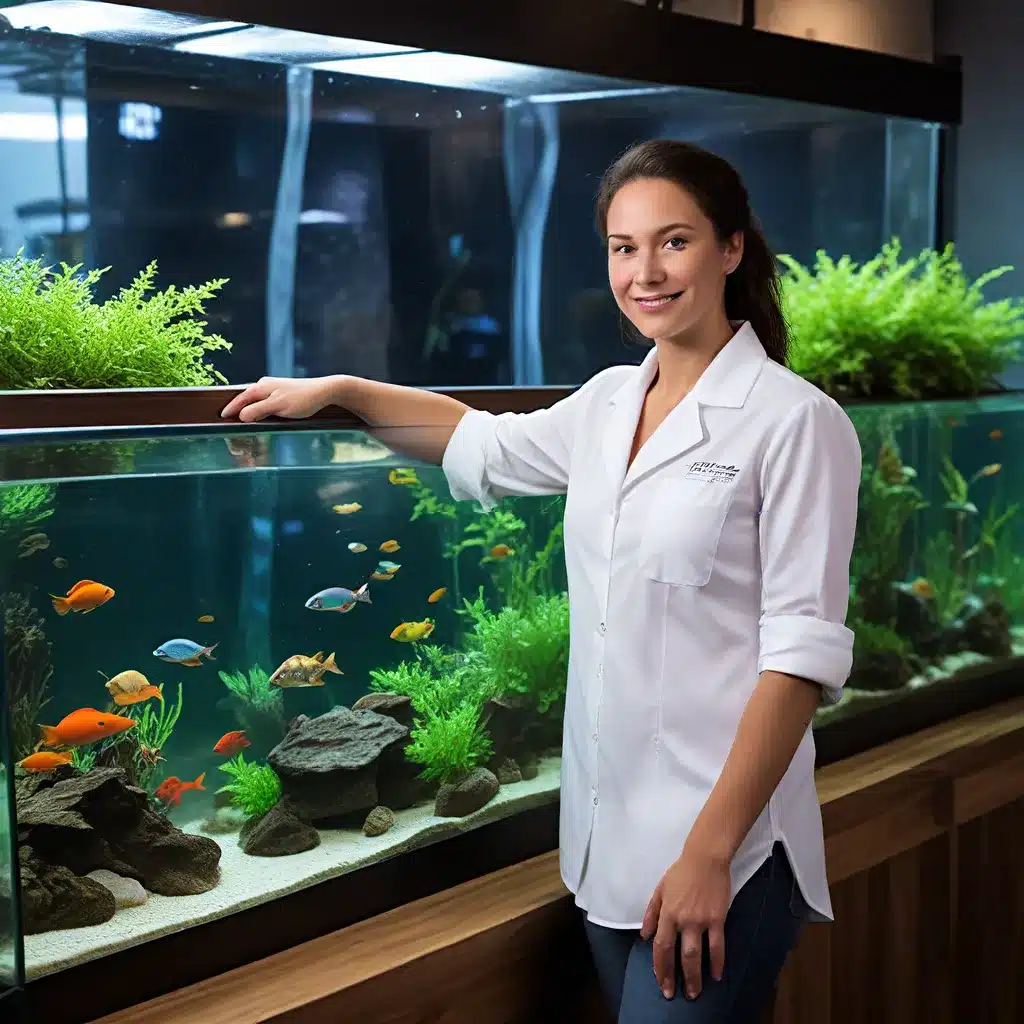
In the captivating world of aquarium keeping, the intersection of art, science, and environmental stewardship is where the true magic happens. As passionate hobbyists, we have the unique opportunity to create vibrant, self-sustaining ecosystems that not only delight the senses but also promote the well-being of the aquatic life we cherish.
Sustainable Aquascaping: Balancing Beauty and Biodiversity
Aquascaping, the art of designing and arranging aquatic plants, rocks, and hardscape elements, has evolved far beyond mere aesthetics. The most innovative and forward-thinking aquarists are embracing sustainable aquascaping techniques that mimic natural environments, fostering a harmonious balance between form and function.
One such approach, known as the Iwagumi style, emphasizes the strategic placement of carefully selected rocks to create a minimalist, Japanese-inspired layout. By carefully considering the size, shape, and arrangement of these focal points, aquarists can encourage the natural growth and propagation of aquatic plants, creating a visually striking and self-sustaining ecosystem.
Another intriguing sustainable aquascaping technique is the biotope aquarium, which aims to recreate the specific habitat of a particular region or ecosystem. These aquariums are meticulously designed to mimic the natural water conditions, substrate, and vegetation found in the target environment, providing a haven for native species to thrive.
Regardless of the specific aquascaping approach, the underlying principles of sustainability and ecological balance are paramount. Aquarists who embrace these practices not only create stunning visual displays but also contribute to the preservation of aquatic biodiversity, ensuring the long-term health and resilience of their aquarium ecosystems.
Optimizing Water Quality for Vibrant Aquatic Life
Alongside thoughtful aquascaping, maintaining optimal water quality is a crucial aspect of sustainable aquarium management. By understanding and implementing effective water management strategies, aquarists can create an environment that supports the diverse needs of their aquatic inhabitants.
One cutting-edge water treatment technique is the use of biological filtration, which harnesses the power of beneficial bacteria to break down waste and maintain a healthy, balanced water chemistry. This process not only enhances the overall water quality but also reduces the need for frequent water changes, conserving both water and energy resources.
Another essential component of sustainable water management is the incorporation of live plants, which play a vital role in oxygenating the water, absorbing excess nutrients, and creating a natural, balanced ecosystem. By selecting a diverse array of hardy, low-maintenance plant species, aquarists can ensure their aquarium thrives without the need for constant intervention.
Mastering the art of water testing and monitoring is also crucial for maintaining optimal water quality. By regularly testing parameters such as pH, ammonia, nitrites, and nitrates, aquarists can proactively address any imbalances and make informed decisions to maintain a healthy, vibrant aquatic environment.
Cultivating a Thriving Aquarium Ecosystem
Sustainable aquarium management is not just about the aesthetics or the technical aspects of water treatment; it’s about fostering a holistic, self-sustaining ecosystem that supports the diverse needs of its aquatic inhabitants.
By carefully selecting compatible fish species, aquarists can create a harmonious community that coexists peacefully and contributes to the overall balance of the aquarium. This might involve, for example, choosing a mix of peaceful community fish, bottom-dwelling scavengers, and algae-eating species, each playing a vital role in maintaining a healthy, stable environment.
Beyond the fish, sustainable aquarium practices also extend to the selection and care of aquatic plants. By choosing hardy, low-maintenance species that thrive in the specific water conditions, aquarists can create a lush, diverse, and self-propagating underwater garden, reducing the need for constant intervention and ensuring the long-term flourishing of the aquarium ecosystem.
Ultimately, the key to cultivating a thriving aquarium lies in embracing a holistic, sustainable approach that considers the complex interplay between water quality, aquascaping, and the diverse inhabitants that call the aquarium home. By harnessing the power of these sustainable practices, aquarists can unlock the true potential of their aquariums, creating vibrant, self-sustaining oases that inspire and delight.
Unlocking the Joy of Sustainable Aquarium Keeping
As aquarium enthusiasts, we have the unique opportunity to be stewards of the aquatic realm, fostering environments that not only captivate the senses but also promote the well-being of the creatures we cherish. By embracing sustainable aquarium practices, we can create enchanting underwater landscapes that are as beautiful as they are ecologically balanced.
Whether you’re a seasoned aquarist or a newcomer to the hobby, the journey of sustainable aquarium keeping is one filled with endless discoveries, challenges, and the immense satisfaction of witnessing a thriving, self-sustaining ecosystem. By harnessing the power of science, art, and environmental stewardship, we can unlock the true magic of the aquarium, transforming our living spaces into vibrant, living works of aquatic alchemy.

